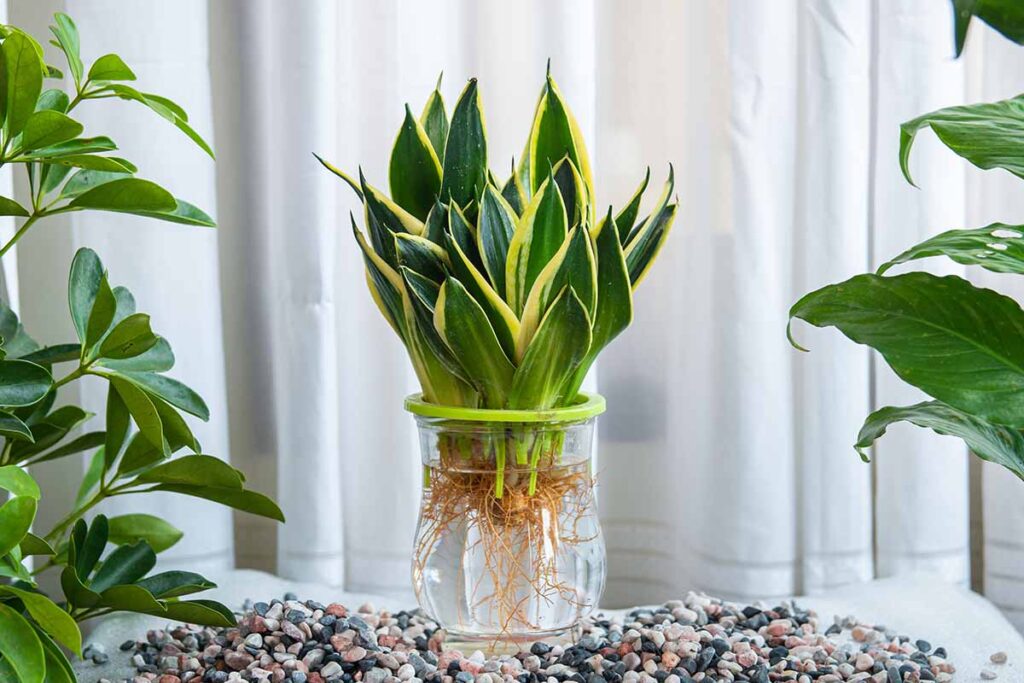
I. Introduction to Growing Snake Plants in Water
A. Overview of Snake Plants: Snake plants, scientifically known as Sansevieria, are popular indoor plants admired for their striking appearance, air-purifying qualities, and low maintenance requirements.
B. Growing Plants in Water: Hydroponics: Hydroponics is a method of growing plants without soil, where the plant’s roots are submerged in a nutrient-rich water solution to support growth.
C. Feasibility of Growing Snake Plants in Water: While snake plants are typically grown in well-draining soil, there is growing interest in exploring the possibility of cultivating them in water due to the benefits it offers and the adaptability of snake plants to different growing conditions.
II. Benefits of Growing Snake Plants in Water
A. Reduced Maintenance: Growing snake plants in water can reduce the need for frequent watering and soil monitoring, making them an ideal choice for busy individuals or those with limited gardening experience.
B. Cleaner Environment: Water cultivation minimizes the risk of soil-borne pests and diseases, creating a cleaner and more hygienic environment for the plants to thrive.
C. Enhanced Root Development: Immersion in water encourages robust root growth, leading to healthier and more vigorous snake plants with improved stability and nutrient uptake.
III. Steps to Grow Snake Plants in Water
A. Selection of Healthy Snake Plant Cuttings: Choose mature, healthy snake plant cuttings with at least one leaf and a portion of the rhizome intact for successful propagation.
B. Propagation in Water: Place the snake plant cuttings in a container filled with filtered or distilled water, ensuring that the lower portion of the cutting remains submerged while the leaves are above the waterline.
C. Maintenance and Care Tips: Change the water every few weeks to prevent stagnation and algae growth, and monitor the roots for signs of rot or nutrient deficiency. Provide indirect sunlight and maintain a consistent room temperature for optimal growth.
IV. Potential Challenges and Solutions
A. Root Rot and Waterborne Diseases: Excessive moisture can lead to root rot and the development of waterborne diseases in snake plants. To prevent this, ensure proper drainage and sanitation practices, and use a balanced nutrient solution to support root health.
B. Nutrient Deficiency: While water provides essential hydration, snake plants grown solely in water may eventually deplete nutrient levels. Supplement the water with a diluted liquid fertilizer or hydroponic nutrient solution to replenish essential nutrients and promote healthy growth.
C. Temperature and Lighting Requirements: Maintain a stable temperature between 60-80°F (15-27°C) and provide indirect sunlight or artificial grow lights for optimal photosynthesis and growth. Avoid placing snake plants in direct sunlight, as this can lead to leaf burn and stress.
V. Conclusion: Exploring the Versatility of Snake Plants in Water Cultivation
In conclusion, while snake plants are traditionally grown in soil, the option of cultivating them in water presents an exciting opportunity for indoor gardening enthusiasts. By understanding the benefits, steps, and potential challenges associated with growing snake plants in water, you can explore new avenues of plant cultivation and enjoy the beauty and resilience of these versatile houseplants in your home or office space. Whether you choose to grow snake plants in soil or water, they are sure to add a touch of elegance and greenery to any indoor environment.



